Leon Battista Alberti, Italian architect, art theorist and writer, was born in Genoa in 1406 and died in Rome in 1472. He began his artistic studies in Padua and Bolonia, but the most important period of formation passed in Rome, where he in 1432 started to work in the office of an apostolic abbreviator. He studied deeply the classic architecture, its design, proportions, decorations and projecting.
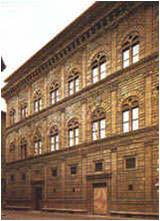
Santa Maria Novella
- The important Florentine work of Alberti was the facade of a gothic church of Santa Maria Novella (finished in 1470). But the works of greater value were created by Alberti in other cultural centers. In Rome, under protection of pope Nicolas V, he worked as an archeologist and restorer of ancient monuments (Santa Maria Maggiore, Santo Stefano Rotondo, San Teodoro) and city-planner, where he wrote “De re aedificatoria” (10 volumes, 1443-1445 or 1447-1452), the first work of an architect dedicated to the problems of urbanism in Renaissance city.
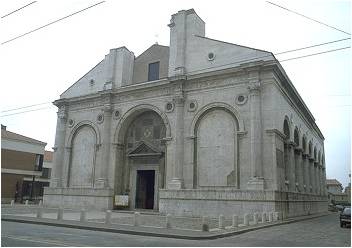
Tempio Malatestiano
- The church of San Francesco, Rimini was recased as a monument to the glory of the tyrant of Rimini, Sigismondo Malatesta. The building was designed by Leon Battista Alberti(1404-72), one of “l’uomo universale” in Renaissance period. The director of the construction was Matteo de’Pasti and the designer of the interior was Agostino di Dccio
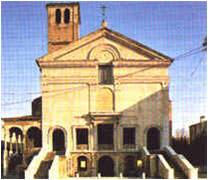
San Sebastiano
- “Alberti’s churches in Mantua, designed for Marquis Ludovico Gonzaga, are reinterpretations of ecclesiastical architecture in antique terms. San Sebastiano is a Greek-cross votive church raised over a high crypt packed with piers. The façade (the steps are modern) is a flattened temple front articulated with four pilasters, the central window breaking into the pediment. It is a puzzling structure, never completed, and marred by twentieth-century restorations.”
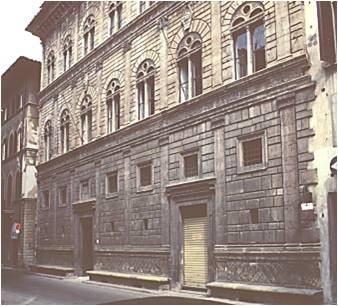
Palazzo Rucellai
- Alberti designed a rational “skin” for this palace–a type of “screen” architecture in which the classical elements provide no support structure. All three stories are of equal height with flat pilasters supporting a classical entablature.
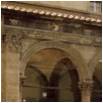
Rucellai loggia
- “In this loggia he turned the arches over the closely spaced columns in the facade and also over the corbels, in order to have a series of arches on the outside and to follow the same pattern internally.”
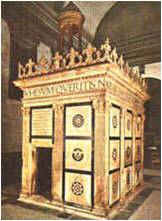
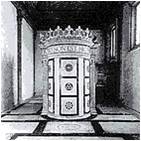
Tempietto del San Sepolcro in Cappella Rucellai
- “For the Rucellai family Alberti also made a chapel in San Pancrazio which rests on great architraves supported by two columns and two pilasters piercing the wall of the church below…In the middle of the chapel is a marble tomb of an elongated oval shape and resembling , as is written on it, the sepulchre of Jesus Christ in Jerusalem.”
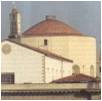
Church of SS. Annunziata, Florence
- “About this time Ludovico Gonzaga, marquis of Mantua, determined that he would have the tribune of the principal chapel of the Servite church of the Annunziata in Florence built after Alberti’s plans and model…This was a very ingenious and difficult structure, taking the form of a circular temple with a ring of nine chapels which opened off like niches.”
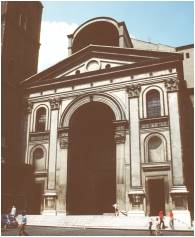
Sant’Andrea
- Leon Battista Alberti(1404-72) turned his attention to the traditional Latin cross plan and applied a combination of a temple front and a triumphal arch to the facade.
- Alberti not only produced a new facade design but abandoned the nave-and-aisles type of basilica church which Brunelleschi had used, turning instead to a Latin cross form with a barrel-vaulted nave and a series of alternating chapels and supports on either side.
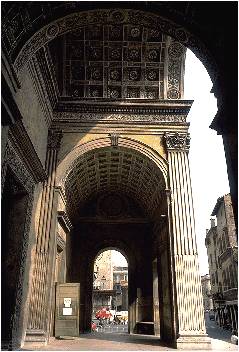
Sant’Andrea
- The entrance and the end of the loggia
- The entrance barrel vault echoes the interior with its huge barrel vault while the loggia vaulting echoes the barrel vaulting in the chapels inside at right angels to the nave.
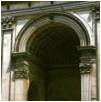
Sant’Andrea, Mantua
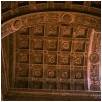
Sant’Andrea, Vault
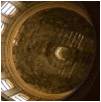
Sant’Andrea, Cupola
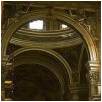
Sant’Andrea Interior
- “Then in 1457, the year when the German Johann Gutenberg discovered his very useful method for printing books, Alberti similarly discovered a way of tracing natural perspectives and effecting the diminution of figures, as well as a method of reproducing small objects on a large scale; these were very ingenious and fascinating discoveries, of great value for the purposes of art.”
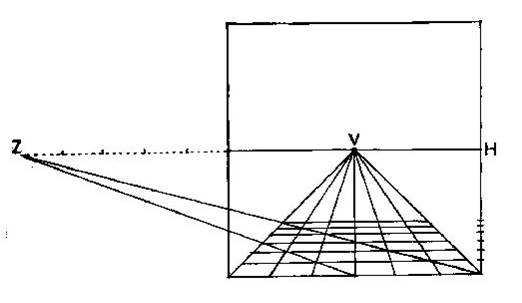

I believe that your date of
I believe that your date of his birth is wrong in the intro. You have it as 1406, but as 1404 everywhere else. And everywhere else I look has it as 1404
And you should note that your CAPTCHA is stated as “case sensitive”